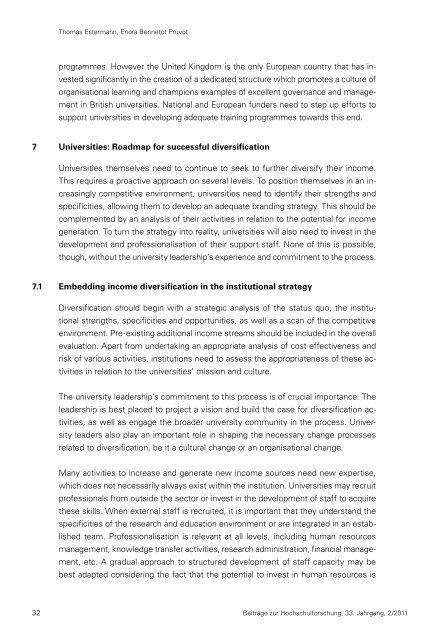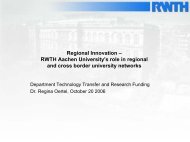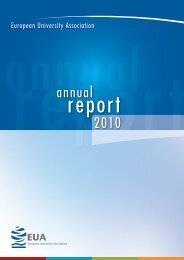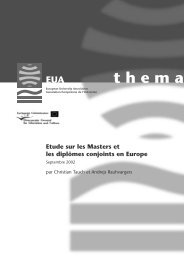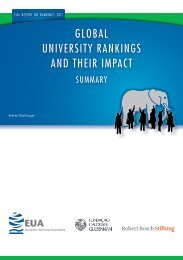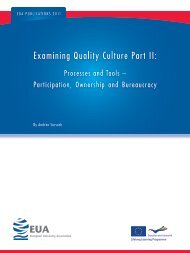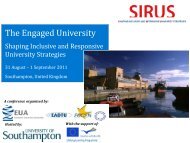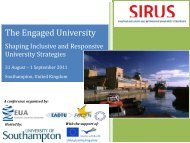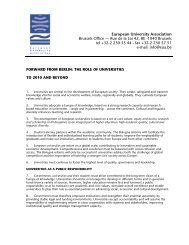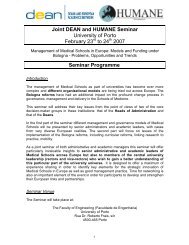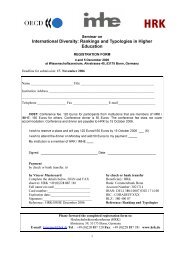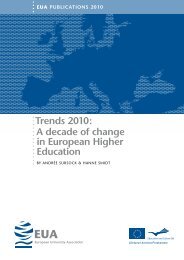Beiträge zur Hochschulforschung - European University Association
Beiträge zur Hochschulforschung - European University Association
Beiträge zur Hochschulforschung - European University Association
Create successful ePaper yourself
Turn your PDF publications into a flip-book with our unique Google optimized e-Paper software.
32<br />
Thomas Estermann, Enora Bennetot Pruvot<br />
programmes. However the United Kingdom is the only <strong>European</strong> country that has in-<br />
vested significantly in the creation of a dedicated structure which promotes a culture of<br />
organisational learning and champions examples of excellent governance and manage-<br />
ment in British universities. National and <strong>European</strong> funders need to step up efforts to<br />
support universities in developing adequate training programmes towards this end.<br />
7 Universities: Roadmap for successful diversification<br />
Universities themselves need to continue to seek to further diversify their income.<br />
This requires a proactive approach on several levels. To position themselves in an in-<br />
creasingly competitive environment, universities need to identify their strengths and<br />
specificities, allowing them to develop an adequate branding strategy. This should be<br />
complemented by an analysis of their activities in relation to the potential for income<br />
generation. To turn the strategy into reality, universities will also need to invest in the<br />
development and professionalisation of their support staff. None of this is possible,<br />
though, without the university leadership’s experience and commitment to the process.<br />
7.1 Embedding income diversification in the institutional strategy<br />
Diversification should begin with a strategic analysis of the status quo, the institu-<br />
tional strengths, specificities and opportunities, as well as a scan of the competitive<br />
environment. Pre-existing additional income streams should be included in the overall<br />
evaluation. Apart from undertaking an appropriate analysis of cost effectiveness and<br />
risk of various activities, institutions need to assess the appropriateness of these ac-<br />
tivities in relation to the universities’ mission and culture.<br />
The university leadership’s commitment to this process is of crucial importance. The<br />
leadership is best placed to project a vision and build the case for diversification ac-<br />
tivities, as well as engage the broader university community in the process. Univer-<br />
sity leaders also play an important role in shaping the necessary change processes<br />
related to diversification, be it a cultural change or an organisational change.<br />
Many activities to increase and generate new income sources need new expertise,<br />
which does not necessarily always exist within the institution. Universities may recruit<br />
professionals from outside the sector or invest in the development of staff to acquire<br />
these skills. When external staff is recruited, it is important that they understand the<br />
specificities of the research and education environment or are integrated in an estab-<br />
lished team. Professionalisation is relevant at all levels, including human resources<br />
management, knowledge transfer activities, research administration, financial manage-<br />
ment, etc. A gradual approach to structured development of staff capacity may be<br />
best adapted considering the fact that the potential to invest in human resources is<br />
<strong>Beiträge</strong> <strong>zur</strong> <strong>Hochschulforschung</strong>, 33. Jahrgang, 2/2011


